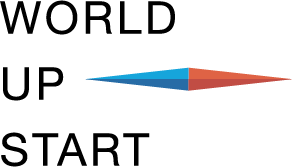Saving Lives by Revolutionizing Cancer Diagnosis
Time is not just money; it's life, especially when battling cancer. Early treatment significantly boosts survival chances by preventing harmful growth and metastasis. Sometimes a major source of delay is the diagnosis itself – finding out the precise type of cancer you have so that your medical team knows how to treat it.
Typically, that involves taking a biopsy, sending it to a laboratory, and then waiting for the complex tests needed to confirm a diagnosis.
SDS Optic, based in Poland and a graduate of WorldUpstart's Accelerator program, has developed a high-tech optics microprobe that can diagnose HER2-positive breast cancer in just 30 minutes - no more waiting days or weeks for lab results! Called inPROBE®, the device has completed a Phase I clinical trial, which will shortly be published, and is beginning a larger Phase II efficacy study. inPROBE’s technology has potential for use in a wide variety of other cancers, including liver and prostate cancers, and SDS Optic’s goal is to increase the cancer cure rate by 30% by 2030 via accelerated diagnosis and treatment.
To get there, the company realized it needed a U.S. presence, with the U.S. operation initially focused on research and development rather than sales and marketing. As Chief Operating and Business Officer Mateusz Sagan explains, “This technology very much depends on molecular biology.” And that’s where the company’s research must focus, since the fiber-optic technology the system uses is well established. And that led to the need to come here: “Central Europe is great when it comes to technology development,” Sagan says, “but unfortunately, we have limited high expertise in molecular biology.” In the U.S., SDS Optic found an entire ecosystem of R&D expertise and also funding opportunities, potential corporate partners, and other necessary elements for the company’s growth.
Given the company’s Harvard links, one might have expected it to set up shop in Boston, but instead, after participating in the WorldUpstart U.S. Market Gateway Accelerator and carefully considering a number of possibilities, SDS Optic chose Philadelphia. A variety of factors went into that decision, including an impressive local ecosystem and what Sagan enthusiastically calls a “huge” talent pool. Everything the company is likely to need, including industry experts, service providers and, most importantly, researchers, is readily available and comparatively affordable – critical factors for a small company that must be frugal with its resources.
The “tremendous pool” of biomedical talent in Philly, Sagan notes, will help the company move ahead with both its current focus on cancer and its expected follow-up: ocular disorders.
While delighted with the caliber of local talent for its American research leadership, SDS Optic acknowledges the necessary adjustments in transitioning operations to the U.S. The disparities between the American and European business ecosystems, especially in lab operations and procedural efficiency, have required strategic adaptation.
Sagan highlights a key distinction in time dynamics: in the U.S., employment matters unfold rapidly – hiring and losing personnel can occur within days as opposed to months in Europe. This stark contrast, shaped by European labor laws, has required SDS Optic to acclimate to the swifter pace of talent management in the U.S., a significant shift from the more extended timelines in Poland.
Additionally, SDS Optic navigates distinct regulatory landscapes. Sagan emphasizes the need to adjust to disparate administrative procedures, encompassing HR practices, accounting protocols, tax structures, and legal intricacies. Participating in an ecosystem that facilitates seamless connections between business, science, investors, and co-founders has pleasantly surprised the company. Sagan notes the absence of the substantial divide between science and business still encountered in central Europe, emphasizing the unique and positive collaborative environment fostered in the U.S.
As SDS Optic gets its U.S. R&D facility up and running, the firm will certainly have a lot on its plate: completing the necessary clinical trials of inPROBE for HER-2 positive breast cancer, planning for the regulatory approval process and commercialization while at the same time pursuing the multitude of other applications this technology can have, both in the cancer realm and beyond.
There is much to do to meet that lofty goal of a 30% increase in the cancer cure rate by 2030, but the company’s leaders believe they have a clear path forward.
As SDS Optic integrates into the American business landscape, the company's ability to swiftly navigate these differences, facilitated by the WorldUpstart Accelerator program, positions them for success in achieving their ambitious goals.
Companies looking to expand to the U.S. market and join a robust ecosystem should consider the WorldUpstart U.S. Market Gateway Accelerator to double their chances of success. For more information, visit www.worldupstart.com.


